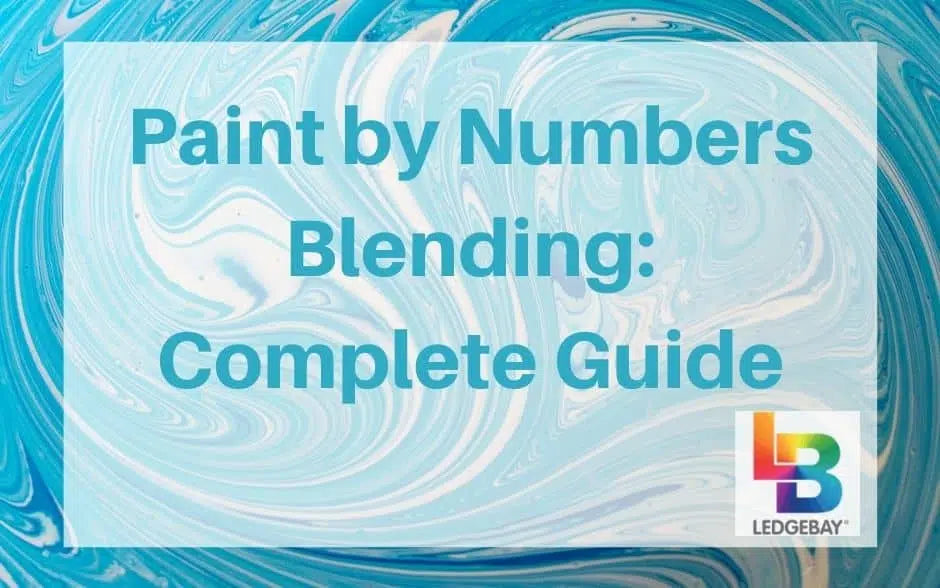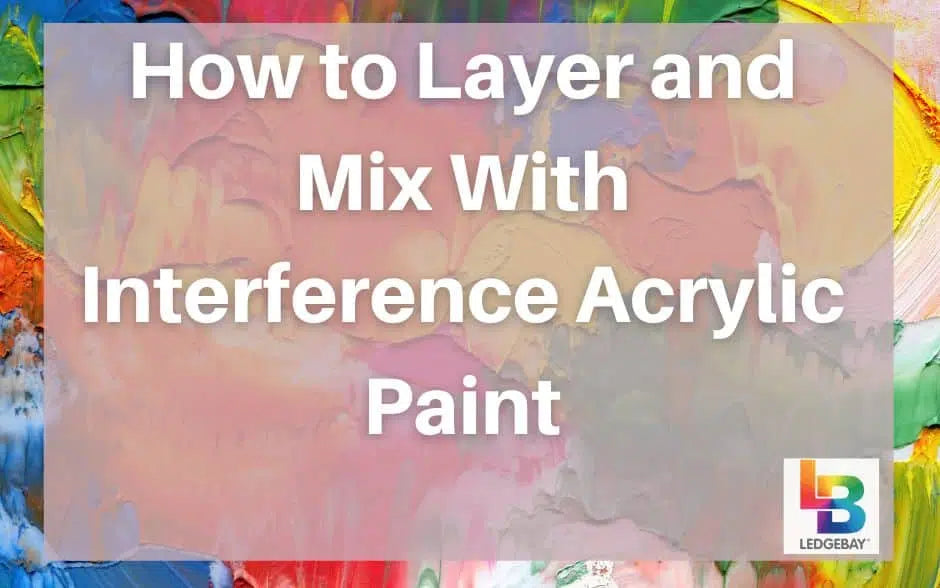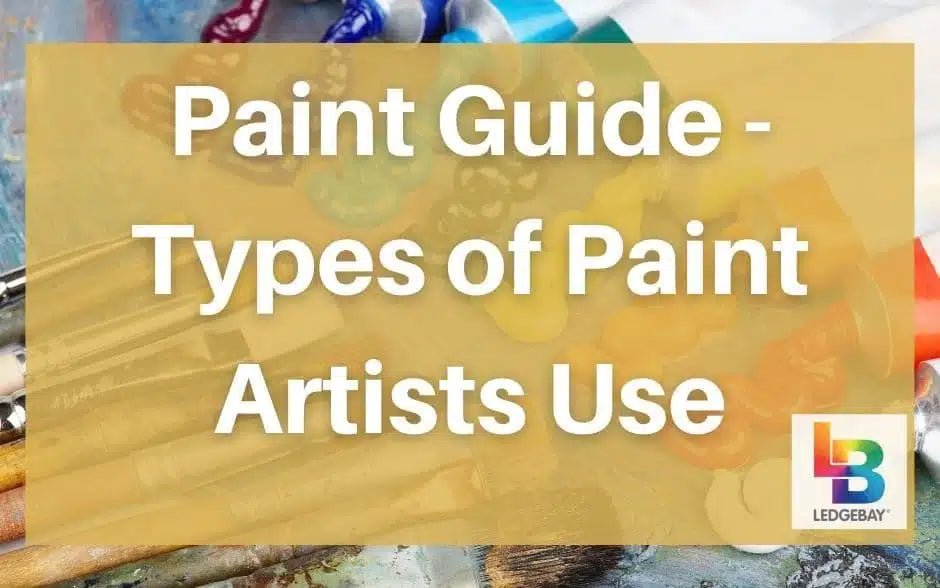Paint by numbers blending is a more advanced technique that you don't have to use on your first kit. Further on, however, blending will give you great results.
Do you lovepainting but feel like you don’t have the skills for it? Then,painting by numbers is just the thing for you!
It’s such a simple concept: you match each section with its corresponding number and color. Still, there’s no denying that it’s a gratifying way of expressing your artistic side.
You can easilycreate beautiful works of art worthy of hanging in any posh gallery, especially if you use certainpainting techniques .
In this article, we’re going to focus on one particular technique:paint by numbers blending . It’s an advanced technique that’ll take you some time to master. Once mastered, though, you’ll get to enjoy spectacular results.
Let’s get started! Almost everypaint by number picture will come out looking terrific. Their whole concept is based on how they make painting foolproof and accessible to everyone, no matter their skill level.
Almost everypaint by number picture will come out looking terrific. Their whole concept is based on how they make painting foolproof and accessible to everyone, no matter their skill level.
Even so, you canmake your picture come alive by using a basic technique known as blending. Thispainting method makes your works of art look radiant and full of life. It’s best used for coloring bodies of water, skyscapes, open fields, and lots more.
You can use blending to create a seamless shift between different colors where it’sneeded in the painting . It’s also used to soften lines and give an air of subtlety to your work.
The main difference betweenacrylic and oil paints is their drying time.Oil paints take much longer to dry. They give you plenty of time to achieve the perfect blended look you’re aiming for.
[amazon box="B004OKRI9S"]
On the other hand,acrylic paints have a faster drying time. This means you’ll need to work quickly to get thecolors blended to your satisfaction .
There are several ways to give yourself more time by slowing down the drying time of acrylics, such as:
[amazon box="B00GYJUB1E"]
This is the quickest way to blendcolors in your painting . It’s also the most effective for getting an easy and smooth transition from one color to the next.
Remember,acrylic paint dries quickly. So, you have to work fast to get your colors blended just right before they start to dry up.
The nice thing about double loading is that you don’t have to stick to working in one direction. You can use criss-cross, zigzag, orcross-hatch brush strokes. It depends on your artistic touch and the space you’re working with.
You may notice that some parts need to go slightly lighter or darker. Adding a bit morepaint can give you that desired result.
You can also use this technique to fix a blending faux pas, like blending one color too much into the other. Simply pick up a little bit of the color you need to add more of. Then, using gentle brushstrokes, work to restore the balance.
The problem may be that many consider blending to be somewhat of an advanced technique. As a result, we decided it’d be a good idea to give you a few pointers to help you perfect your blending style. This way, everyone cantry their hand at giving their painting a softer, fresher look. Paint by numbers is the system of taking a picture and dividing it into small, separate areas. Then, giving each area anumber relating to a specific color .
Paint by numbers is the system of taking a picture and dividing it into small, separate areas. Then, giving each area anumber relating to a specific color .
[amazon box="B07R3TP9DG"]
This system began inadvertently in the 16th century byMichelangelo. He used to assign sections of his artwork, mainly the ceilings, to his students as a way of helping out. Yet, to minimize mistakes, he used to give each section a number to help his students along.
Leonardo da Vinci also used to challenge his apprentices by giving them numbered patterns, according to wherecertain colors should go . Da Vinci usually did this with works that didn’t require his immediate attention.
Otherfamous artists used this technique as well.Van Gogh , for example, didn’t even know how to paint in the beginning. He perfected his skills by copying the existing artworks of his time. It’s the same concept aspaint by number that helped him develop his brushwork and color usage.
What started as a way to improve and master artistic skills turned into a pastime for children. Nowadays, people of all ages andartistic styles are getting a thrill out of doing paint by numbers . It’s a relaxing and enjoyable hobby with the advantage of having several health benefits as well.
All you need to practice is to get a scrap piece of paper orcanvas , thenadd some colors and get to blending . Bit by bit, your hands will get abetter feel for the brush and for the right amount of pressure to use.
Use our completeguide to the advanced technique of paint by numbers blending. Soon, you’ll be creating intricate detailing and perfecting your artwork—all with the help of a few gentle brushstrokes.
For a complete gallery of our paint by numbers kits,CLICK HERE!
Do you lovepainting but feel like you don’t have the skills for it? Then,painting by numbers is just the thing for you!
It’s such a simple concept: you match each section with its corresponding number and color. Still, there’s no denying that it’s a gratifying way of expressing your artistic side.
You can easilycreate beautiful works of art worthy of hanging in any posh gallery, especially if you use certainpainting techniques .
In this article, we’re going to focus on one particular technique:paint by numbers blending . It’s an advanced technique that’ll take you some time to master. Once mastered, though, you’ll get to enjoy spectacular results.
Let’s get started!
Paint by Numbers Blending
 Almost everypaint by number picture will come out looking terrific. Their whole concept is based on how they make painting foolproof and accessible to everyone, no matter their skill level.
Almost everypaint by number picture will come out looking terrific. Their whole concept is based on how they make painting foolproof and accessible to everyone, no matter their skill level.Even so, you canmake your picture come alive by using a basic technique known as blending. Thispainting method makes your works of art look radiant and full of life. It’s best used for coloring bodies of water, skyscapes, open fields, and lots more.
What Is Blending?
Blending is when you gently merge two or more colors tocreate a stunning effect . It’s an impressive technique used by artists to give their work a more polished look.You can use blending to create a seamless shift between different colors where it’sneeded in the painting . It’s also used to soften lines and give an air of subtlety to your work.
Best Types of Paint for Blending
Almost any type ofpaint can be blended . Yet, the two best-known types areacrylic or oil paint . They’re both great at creating that progressive transition from one shade to the next. This helpscreate fine details and adds to the overall authenticity of the painting .The main difference betweenacrylic and oil paints is their drying time.Oil paints take much longer to dry. They give you plenty of time to achieve the perfect blended look you’re aiming for.
[amazon box="B004OKRI9S"]
On the other hand,acrylic paints have a faster drying time. This means you’ll need to work quickly to get thecolors blended to your satisfaction .
There are several ways to give yourself more time by slowing down the drying time of acrylics, such as:
[amazon box="B00GYJUB1E"]
- Use a fine mist spray to make sure the paint isn’t drying too quickly
- Use a slow-drying acrylic paint called open acrylics
- Add an extender medium to your paint
- Use an acrylic glaze to blend your paints
Blending Techniques
There are several blending methods you can try. Blending will give yourpaint by numbers painting more depth and a more refined finish that regular brushstrokes can’t quite achieve.Wet On Wet
One common method is when you blend the colors as you’re applying them. Start by adding small amounts of each color to the canvas. Then, use a fine-tipped brush to create the desired transition.This is the quickest way to blendcolors in your painting . It’s also the most effective for getting an easy and smooth transition from one color to the next.
Remember,acrylic paint dries quickly. So, you have to work fast to get your colors blended just right before they start to dry up.
Double Loading
Double loading is when you take your flat brush and load it with two different colors. Then, you take the brush and start applying it to the canvas. This gives a bolder and a more decorative effect. It can be easily adjusted using a dry brush toadd finer details in the area.The nice thing about double loading is that you don’t have to stick to working in one direction. You can use criss-cross, zigzag, orcross-hatch brush strokes. It depends on your artistic touch and the space you’re working with.
Wet On Dry
Another blendingtechnique is to add more paint to an already dry or semi-dry area. This is usually done as you’re finishing your painting. One of its benefits is that you don’t have to work as quickly as the ‘wet on wet’ technique.You may notice that some parts need to go slightly lighter or darker. Adding a bit morepaint can give you that desired result.
You can also use this technique to fix a blending faux pas, like blending one color too much into the other. Simply pick up a little bit of the color you need to add more of. Then, using gentle brushstrokes, work to restore the balance.
Blending Tips and Tricks
[amazon box="B07ZMJKMWQ"]The problem may be that many consider blending to be somewhat of an advanced technique. As a result, we decided it’d be a good idea to give you a few pointers to help you perfect your blending style. This way, everyone cantry their hand at giving their painting a softer, fresher look.
- Stick to small areas in the beginning
- Move your brush up and down at the borders where the colors meet
- Apply small brush strokes and work gently
- Use a clean, dry brush to get the desired results
- Wipe your brush often so the blending appears effortless
- Use blending in certain areas only, such as water edges, fields or grass, or the sky
- Blend the numbers using a white lead pencil
Paint by Numbers: A Brief History
 Paint by numbers is the system of taking a picture and dividing it into small, separate areas. Then, giving each area anumber relating to a specific color .
Paint by numbers is the system of taking a picture and dividing it into small, separate areas. Then, giving each area anumber relating to a specific color .[amazon box="B07R3TP9DG"]
This system began inadvertently in the 16th century byMichelangelo. He used to assign sections of his artwork, mainly the ceilings, to his students as a way of helping out. Yet, to minimize mistakes, he used to give each section a number to help his students along.
Leonardo da Vinci also used to challenge his apprentices by giving them numbered patterns, according to wherecertain colors should go . Da Vinci usually did this with works that didn’t require his immediate attention.
Otherfamous artists used this technique as well.Van Gogh , for example, didn’t even know how to paint in the beginning. He perfected his skills by copying the existing artworks of his time. It’s the same concept aspaint by number that helped him develop his brushwork and color usage.
What started as a way to improve and master artistic skills turned into a pastime for children. Nowadays, people of all ages andartistic styles are getting a thrill out of doing paint by numbers . It’s a relaxing and enjoyable hobby with the advantage of having several health benefits as well.
The Takeaway
You can perfect yourpaint by numbers blending technique by constantly practicing. It’s a skill that can add depth and purpose to yourpainting .All you need to practice is to get a scrap piece of paper orcanvas , thenadd some colors and get to blending . Bit by bit, your hands will get abetter feel for the brush and for the right amount of pressure to use.
Use our completeguide to the advanced technique of paint by numbers blending. Soon, you’ll be creating intricate detailing and perfecting your artwork—all with the help of a few gentle brushstrokes.
For a complete gallery of our paint by numbers kits,CLICK HERE!











